Themed collection Chemistry in Biorefineries

Introduction to the RSC Advances themed collection Chemistry in Biorefineries
Professor Carlos Martín, Professor Alejandro Rodríguez and Professor Fabio Montagnaro introduce the RSC Advances themed collection Chemistry in Biorefineries.

RSC Adv., 2023,13, 28561-28563
https://doi.org/10.1039/D3RA90087H
Valorization of homogeneous linear catechyl lignin: opportunities and challenges
The discovery and valorization of the unique homogeneous linear catechyl lignin (C-lignin) are systematically summarized.

RSC Adv., 2023,13, 12750-12759
https://doi.org/10.1039/D3RA01546G
Functional surfaces, films, and coatings with lignin – a critical review
Lignin can be modified and used in functional surfaces, films, and coatings.
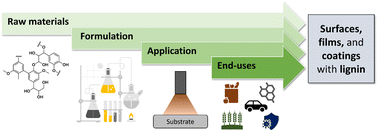
RSC Adv., 2023,13, 12529-12553
https://doi.org/10.1039/D2RA08179B
Sustainable production of catechol derivatives from waste tung nutshell C/G-type lignin via heterogeneous Cu–NC catalytic oxidation
A heterogeneous oxidative process is reported towards sustainable production of valuable catechol derivatives from the depolymerization of Tung nutshell C/G lignin by Cu–NC catalytic process. The CuO and Cu2O might be active species for oxidation.
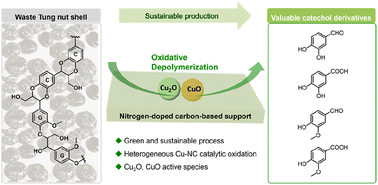
RSC Adv., 2024,14, 5069-5076
https://doi.org/10.1039/D3RA08052H
Boosting functional properties of active-CMC films reinforced with agricultural residues-derived cellulose nanofibres
(L)CNF from horticultural residues or vine shoots improve the structural integrity of CMC films for food packaging. Gallic acid incorporation allows obtaining active films with enhanced UV-light barrier, high antioxidant and antimicrobial capacities.
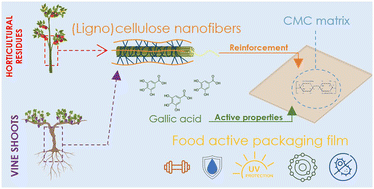
RSC Adv., 2023,13, 24755-24766
https://doi.org/10.1039/D3RA04003H
Variable lignin structure revealed in Populus leaves
NMR analysis of Populus leaves revealed lignin traits such as condensed syringyl units and both erythron/threo conformations of the β-O-4 linkage. Lignin structure was also well correlated with certain metabolites such as salicin derivatives.
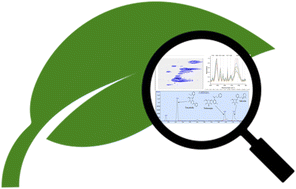
RSC Adv., 2023,13, 20187-20197
https://doi.org/10.1039/D3RA03142J
Conditioning of pretreated birch by liquid–liquid organic extractions to improve yeast fermentability and enzymatic digestibility
Long-chain extractants with suitable properties improve both saccharification and fermentation.

RSC Adv., 2023,13, 20023-20030
https://doi.org/10.1039/D3RA02210B
Chemoselective derivatisation and ultrahigh resolution mass spectrometry for the determination of hydroxyl functional groups within complex bio-oils
Mass spectrometry in combination with a targeted derivatisation can be used for profiling molecular compositions containing hydroxyl groups in bio-oils.

RSC Adv., 2023,13, 17727-17741
https://doi.org/10.1039/D3RA02779A
Lignocellulosic residues from bioethanol production: a novel source of biopolymers for laccase immobilization
Laccase from Dichostereum sordulentum was entrapped in hydrogels formed using lignocellulosic residues from bioethanol production and ionic liquids. The active hydrogel was efficient in ethinylestradiol removal.

RSC Adv., 2023,13, 13463-13471
https://doi.org/10.1039/D3RA01520C
Effect of autohydrolysis and ionosolv treatments on eucalyptus fractionation and recovered lignin properties
This work enhances the understanding of the effect of autohydrolysis and ionosolv treatments combination on fractionation yields and lignin properties.
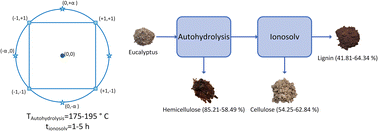
RSC Adv., 2023,13, 10338-10348
https://doi.org/10.1039/D2RA08013C
From liquid to solid-state, solvent-free oxidative ammonolysis of lignins – an easy, alternative approach to generate “N-lignins”
An alternative ammonoxidation protocol was developed. With this new approach in “solid-state” mode, one single solid reagent is sufficient to equip lignin with different N-functionalities.

RSC Adv., 2023,13, 9479-9490
https://doi.org/10.1039/D3RA00691C
Prehydrolysis soda pulping of Enset fiber for production of dissolving grade pulp and biogas
Enset plant residual fibers can be a good candidate for concurrent valorization aimed at dissolving grade pulp and biogas.

RSC Adv., 2023,13, 4314-4323
https://doi.org/10.1039/D2RA07220C
Bioconversion of spent coffee grounds to prebiotic mannooligosaccharides – an example of biocatalysis in biorefinery
Spent coffee grounds can be bioconverted via Man26A to prebiotic mannooligosaccharides; this is an example of biocatalysis in the biorefinery.

RSC Adv., 2023,13, 3773-3780
https://doi.org/10.1039/D2RA07605E
Sustainable solvents for β-diketone extraction from wheat straw wax and their molecular self-assembly into nano-structured tubules for hydrophobic coatings
2,2,5,5-Tetramethyloxolane (TMO) and 2,5-diethyl-2,5-dimethyloxolane (DEDMO) were utilized as sustainable solvents for β-diketone extraction and its molecular self-assembly into nano-structured tubules for hydrophobic coatings.
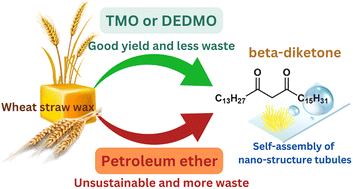
RSC Adv., 2023,13, 2427-2437
https://doi.org/10.1039/D2RA07581D
Anisole hydrodeoxygenation over Ni–Co bimetallic catalyst: a combination of experimental, kinetic and DFT study
High reducible distorted bimetallic sites with medium size in Ni5Co5-AC promoted the production of cyclohexanol by hydrogenation of anisole and subsequent cleavage of C6H11O–CH3 bond.
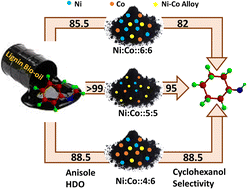
RSC Adv., 2022,12, 30236-30247
https://doi.org/10.1039/D2RA05136B
Salicornia dolichostachya organosolv fractionation: towards establishing a halophyte biorefinery
An organosolv method was developed for the fractionation of fibers of a halophyte plant in a biorefinery approach. Salicornia dolichostachya was used as raw material allowing the production of cellulose, hemicellulose, and lignin fractions.

RSC Adv., 2022,12, 28599-28607
https://doi.org/10.1039/D2RA04432C
Delignified wood aerogels as scaffolds coated with an oriented chitosan–cyclodextrin co-polymer for removal of microcystin-LR
Herein, a preassembled chitosan-cyclodextrin was used as a versatile coating onto delignified wood as an alternative for the removal of microcystin-LR. The addition of β-cyclodextrin proved to allow the nanowood scaffold to adsorb up to 0.12 mg g−1.

RSC Adv., 2022,12, 20330-20339
https://doi.org/10.1039/D2RA03556A
About this collection
The non-renewable nature of fossil fuels makes the current economic model unsustainable. The biorefinery concept, which takes traditional refineries as a starting point and adapts them to environmentally friendly processes based on bioresources as raw materials, has attracted the interest of a large number of scientists. Recent sustainable mobility outlooks indicate that electrification will coexist for a long time with combustion-based propulsion, thus entrusting biorefinery processes and the production of advanced biofuels with increasing importance.
Achieving a sustainable production of bio-based fuels, chemicals and materials requires a deep understanding of the chemistry behind biorefining processes. This themed collection aims to deepen the current knowledge of chemistry in biorefinery.
This collection is Guest Edited by Professor Alejandro Rodríquez Pascual (Universidad de Cordoba), Professor Carlos Martín Medina (Inland Norway University of Applied Sciences) and Professor Fabio Montagnaro (University of Naples Federico II).
If you would be interested in submitting to this collection, please contact the Editorial Office: advances-rsc@rsc.org